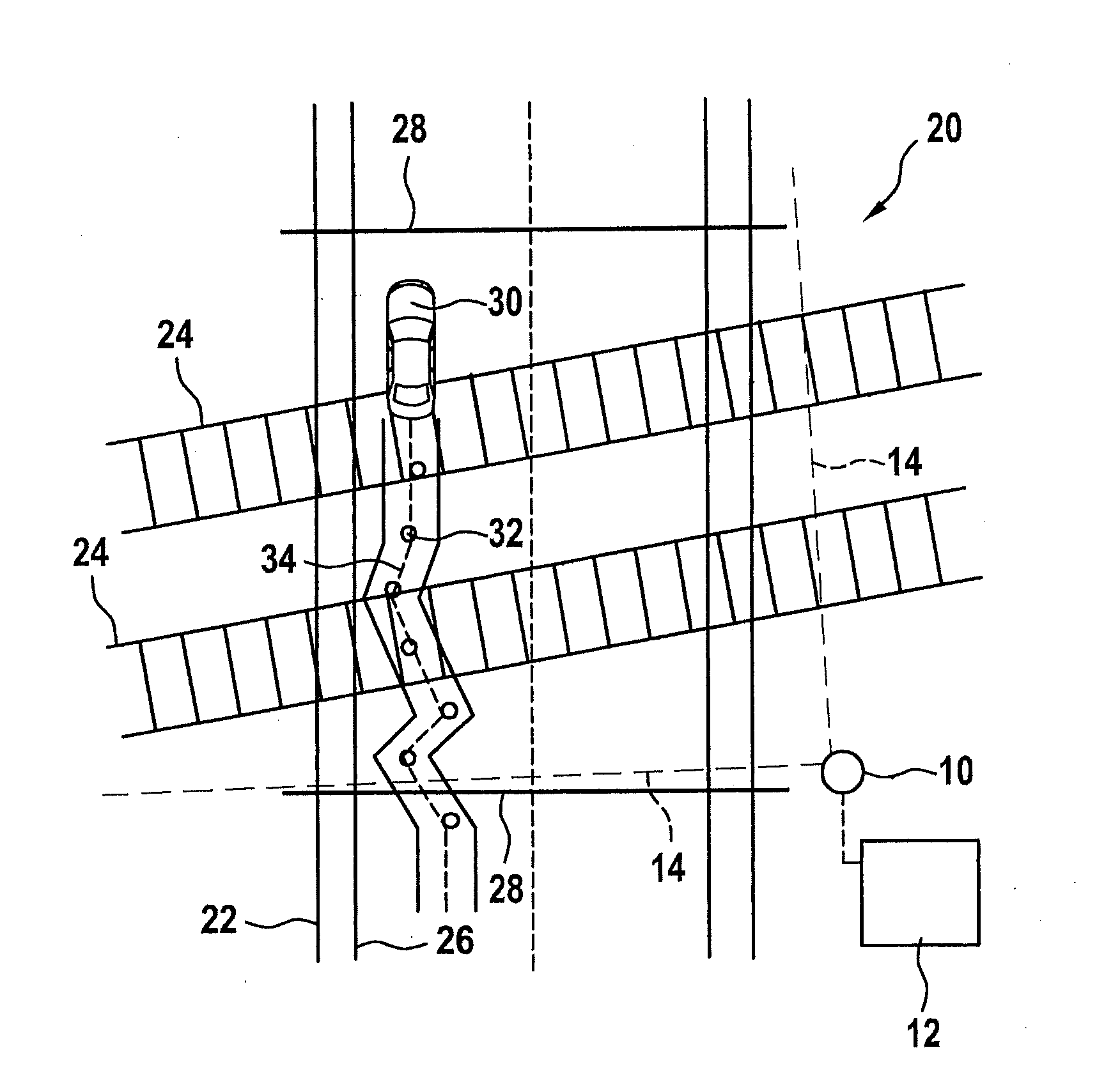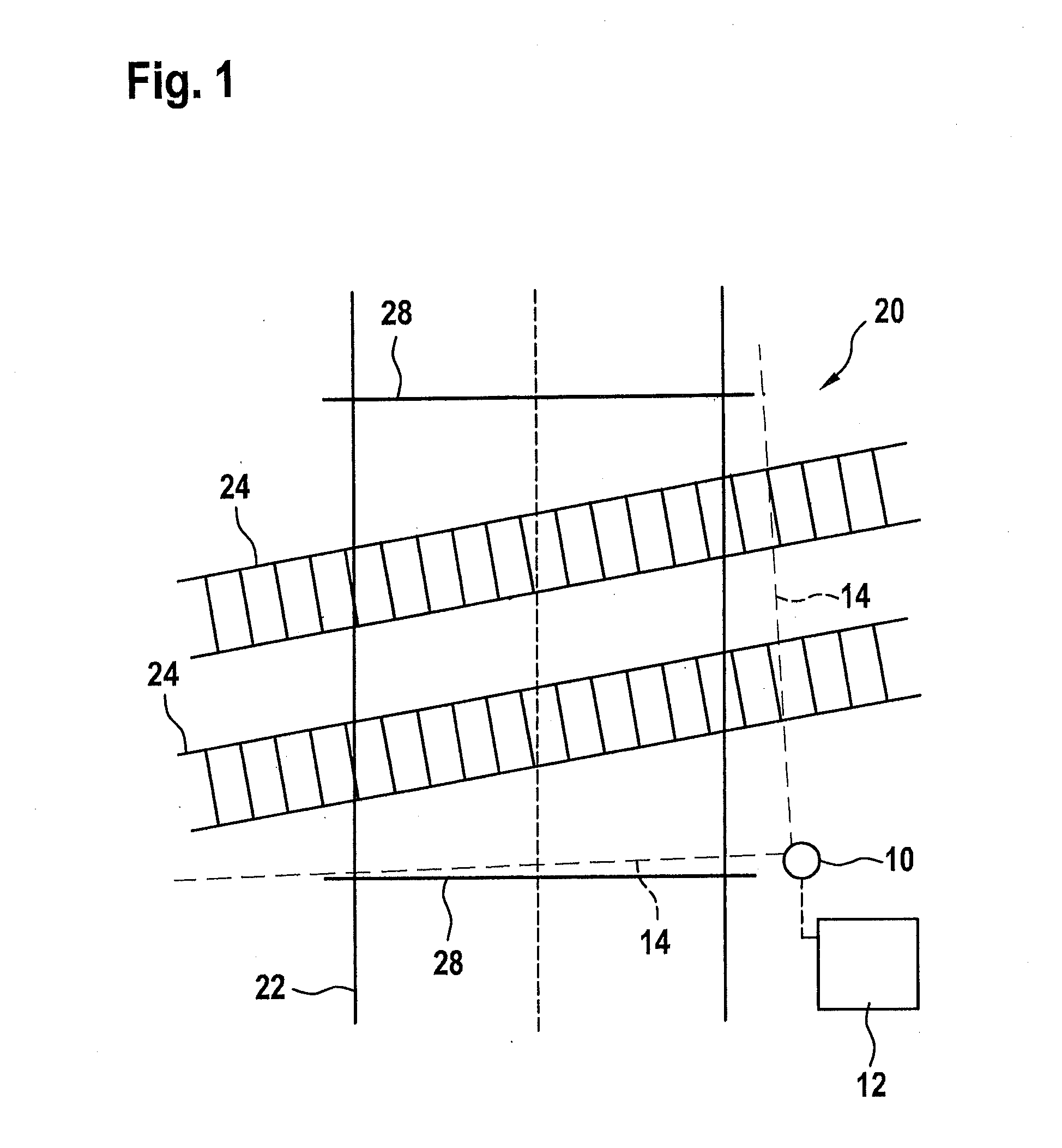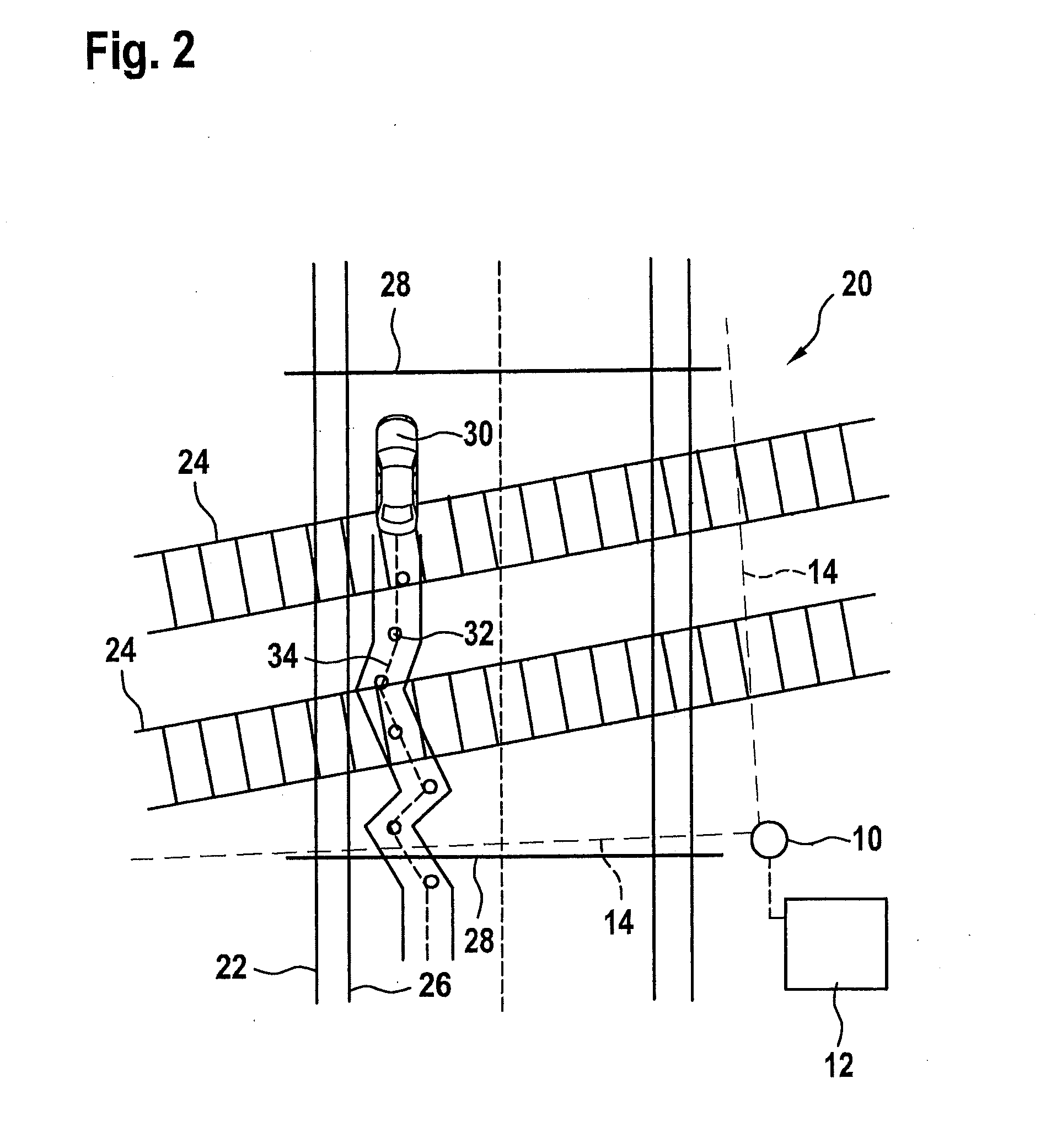Site-specific traffic analysis including identification of a traffic path
a traffic path and site-specific technology, applied in the field of site-specific traffic analysis, can solve the problems of inability to distinguish between traffic lane locations of detected objects, complex installation of wire loops in roadways, and inability to detect sufficiently large metallic objects, etc., to achieve reliable and accurate traffic analysis
- Summary
- Abstract
- Description
- Claims
- Application Information
AI Technical Summary
Benefits of technology
Problems solved by technology
Method used
Image
Examples
Embodiment Construction
[0023]FIG. 1 shows a schematic illustration of a radar sensor 10 and of an evaluation unit 12 connected to radar sensor 10 or integrated therein. Radar sensor 10 is an FMCW radar sensor having a transceiver device, which includes a patch antenna array and has a schematically illustrated field of vision 14, which includes an azimuth angle range of at least 90°. Multiple antenna elements are situated horizontally offset from each other. Field of vision 14 preferably includes an azimuth angle range of at least 160°.
[0024]Radar sensor 10 is situated at the edge of a traffic space 20, which is captured by field of vision 14.
[0025]Traffic space 20 includes a road 22 and may include a railroad having tracks 24 and / or a footpath 26 (FIG. 2), for example.
[0026]FIG. 1 additionally schematically shows barriers 28 of a railroad crossing.
[0027]FIG. 2 shows, by way of example, a situation with an object 30 in the form of a vehicle detected by radar sensor 10. Evaluation unit 12 receives data on o...
PUM
 Login to View More
Login to View More Abstract
Description
Claims
Application Information
 Login to View More
Login to View More - R&D Engineer
- R&D Manager
- IP Professional
- Industry Leading Data Capabilities
- Powerful AI technology
- Patent DNA Extraction
Browse by: Latest US Patents, China's latest patents, Technical Efficacy Thesaurus, Application Domain, Technology Topic, Popular Technical Reports.
© 2024 PatSnap. All rights reserved.Legal|Privacy policy|Modern Slavery Act Transparency Statement|Sitemap|About US| Contact US: help@patsnap.com










